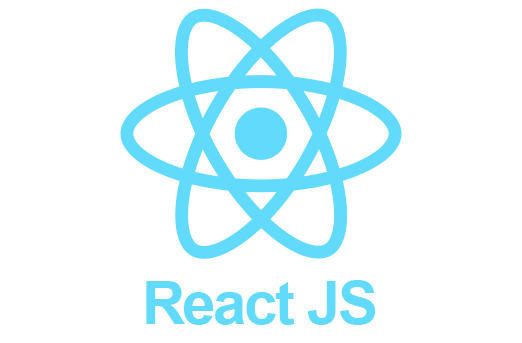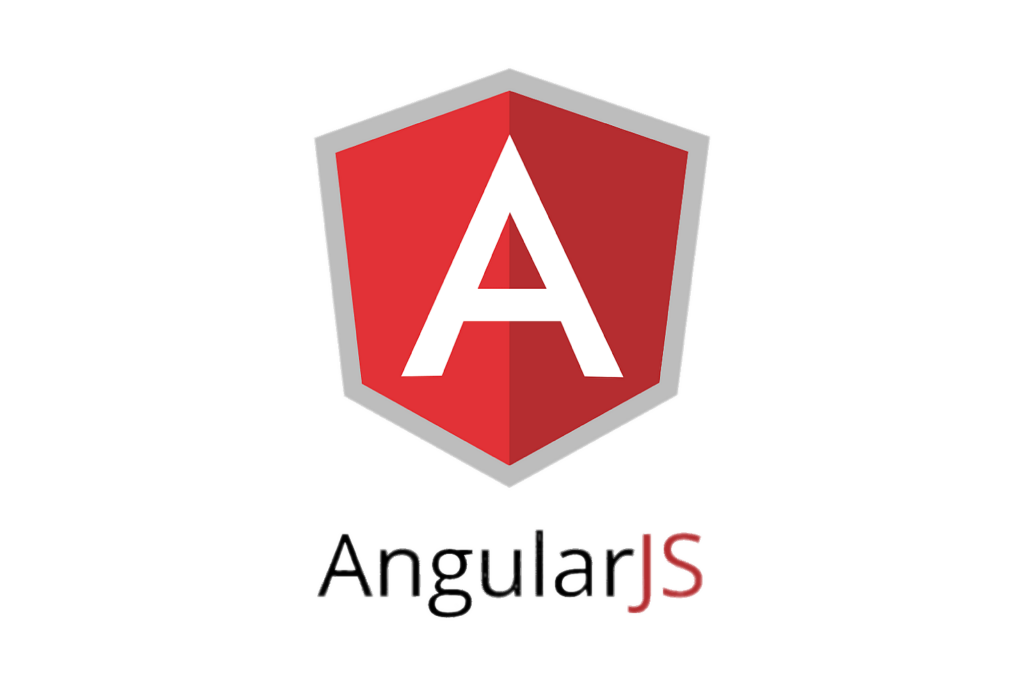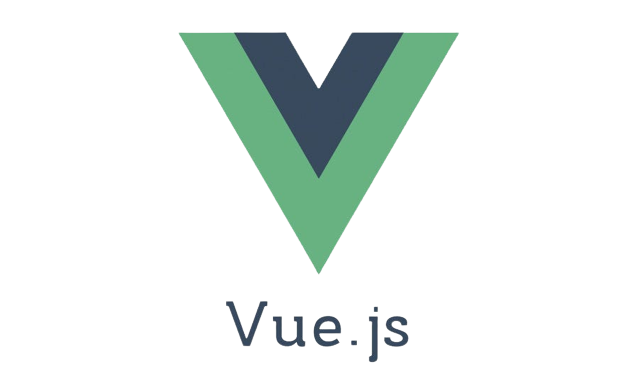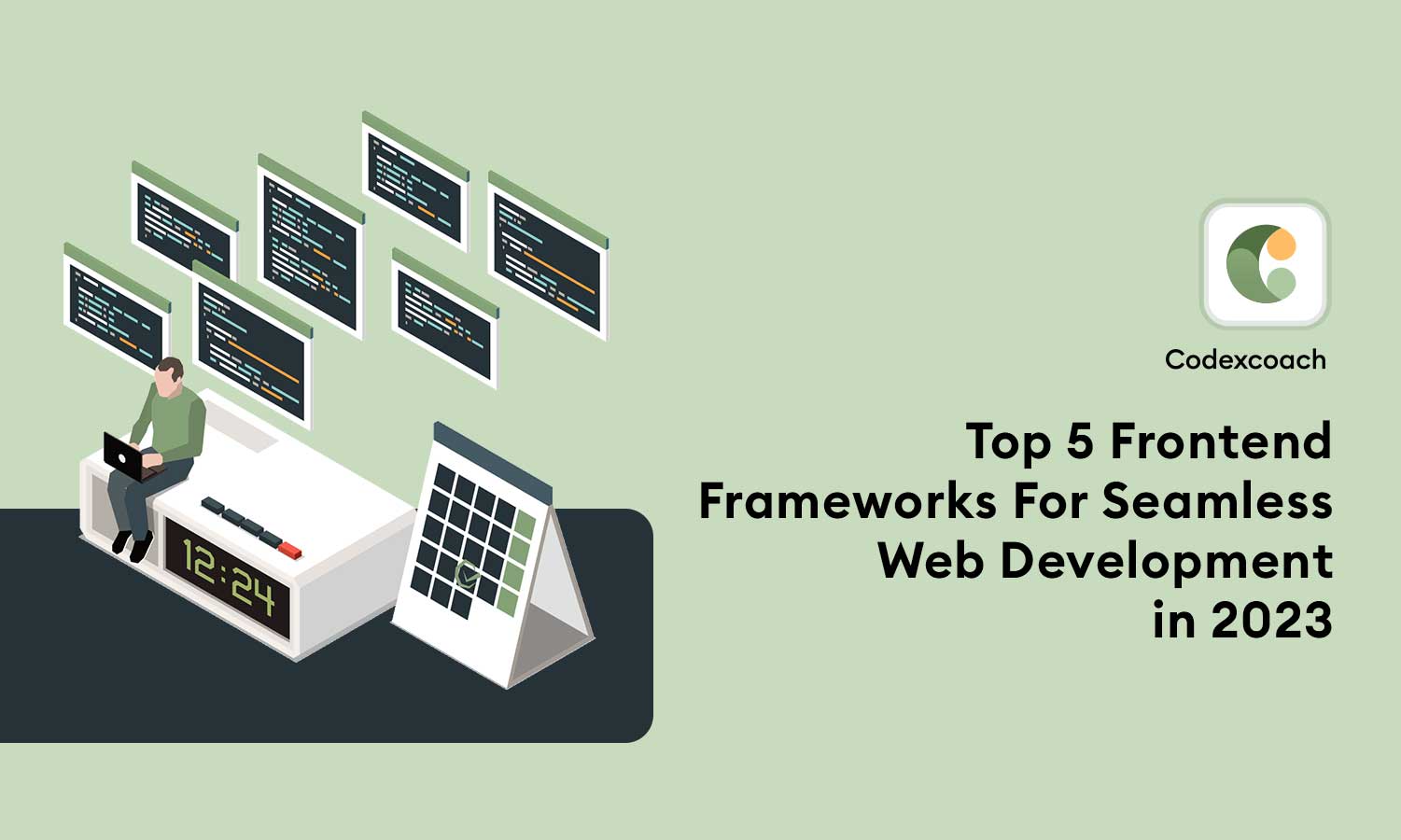The focus of front-end development is creating a user-friendly interface for a website or online application. With over 1.8 billion websites already online and the technological revolution brought by covid-19, it is clear that the need for a front end that is clean, sleek, responsive, precise, and SEO-friendly will increase dramatically in the future. The user experience is always the main concern, no matter how many sophisticated processes are running in the background of a website.
Frontend frameworks, which simplify the creation of dynamic, user-focused websites’ front ends, are essential to the smooth functioning of any organization.
Top 5 Frontend Frameworks for Seamless Web Development

1] React:
The popular front-end JavaScript library React creates user interfaces and other components. It uses the MVC framework with a new data display and accessibility scheme. The Virtual DOM and its approach to document access and modification are two defining characteristics. The Document Object Model (DOM) facilitates communication between HTML and XML documents, making them operate like a tree structure and treating each HTML element as an object.
React, developed by Facebook, is regarded as an excellent front-end library. Components are written using the JSX syntax, a combination of HTML tags and quotation marks. It disassembles complex systems into simpler parts that may be handled independently. The added convenience of this function is sure to increase programmers’ output as a whole.

2] Angular:
The finest collection of front-end development frameworks would be incomplete without Angular. Just one framework here, Angular, uses TypeScript as its foundation. Google created Angular in 2016 to close the gap between the ever-increasing expectations placed on technology and the tried-and-true methods that have historically yielded positive outcomes.
Angular’s two-way data binding is what sets it apart from React. When the model and the view are in sync with one another in real-time, any changes made to the model are reflected promptly in the view and vice versa.
Angular is a great choice whether you’re creating a web app or a mobile app. Moreover, this framework may be used to create single-page and progressive web applications. Several well-known brands use Angular-based apps, including BMW, Xbox, Forbes, Blender, etc

3] Vue.js:
Vue.js is a popular JavaScript framework because it is easy to learn and use. The creators of Vue.js claim to have taken the finest parts of other popular front-end frameworks and merged them into their own. By providing a visible DOM, or Document Object Model, and component-based programming with a two-way binding, the framework neatly eliminates the complications experienced by Angular developers. Vue.js may be used to create online, mobile, and progressive web apps. Several industry leaders, including Alibaba and Xiaomi, use Vue.js.

4] Svelte:
Svelte is a cutting-edge JavaScript compiler designed to make speedy UIs. It was launched in 2017 by its creator, Rich Harris, and is still in its infancy. The absence of a virtual DOM is what sets it apart. Instead, a specialized JavaScript Virtual Machine built for UI development is used. Because of this, Svelte may be up to 10 times quicker than competing frameworks like Angular and React.
If you require a compact and fast app designed by a small team of front-end devs, Svelte is a suitable option.

5] JQuery:
One of the first frameworks to appear in 2006 was jQuery. Vue.js is unique in the current technological ecosystem because of its user-friendliness, speed of development, and the absence of a necessity to write complex JavaScript scripts. The fact that jQuery is always being improved means it is another of its many advantages. In its most basic form, jQuery is a library that may be used to alter a website’s DOM and CSS to enhance its usability and interaction.
Conclusion
Since each framework has advantages and disadvantages, as well as different complexity and often published upgrades bringing new features to the table, it is impossible to declare which is the best in 2023. Of course, we can’t include every viable answer; many great front-end frameworks were left out.
-

CodexCoach is a skilled tech educator known for easy-to-follow tutorials in coding, digital design, and software development. With practical tips and interactive examples, CodexCoach helps people learn new tech skills and advance their careers.





